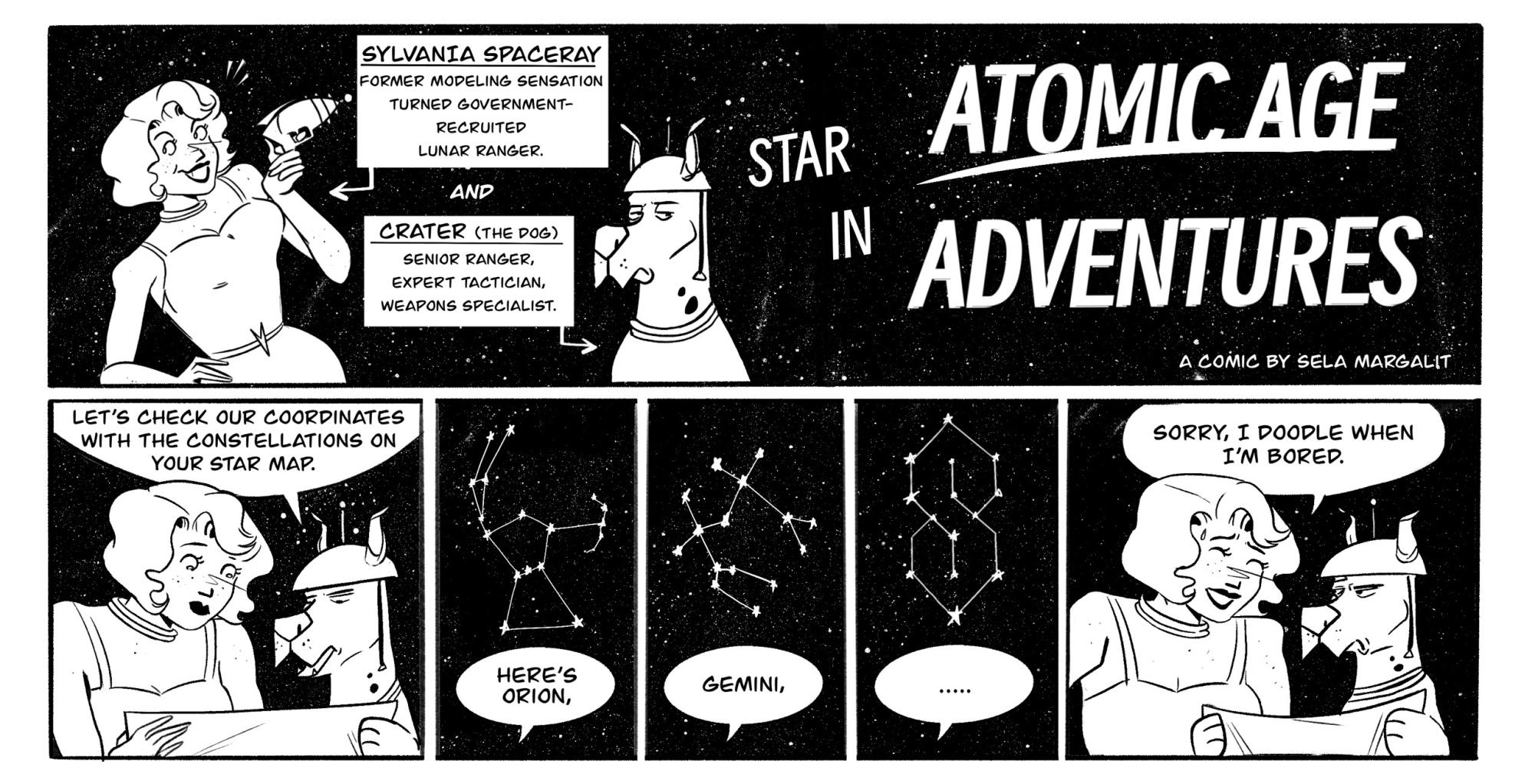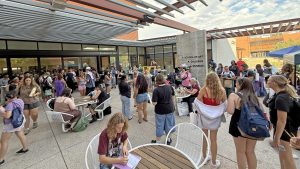
Centennial Prize winner Blanchette creates living sculpture
By Michael Chesnick. November 9, 2023Growing up in Maine, Claire Fall Blanchette often tagged along with a landscaper — her mom. “I spent a lot of time outside,” the School of Art graduate student said.
The experience had a big influence on Blanchette when she began to bring nature into her artwork, including plants, grass and now fungi.
That’s right, the MFA candidate’s November-December 2023 solo exhibition at the Lionel Rombach Gallery featured two interacting walls of bricks that she “grew” with mycelium, the invisible part of mushrooms whose roots consist of minuscule fungal threads called hyphae.

She titled the exhibition “To Pass Through Two Doors at Once” — a “physical metaphor for human interaction with the natural world,” she said. Working on the living sculpture was part of Blanchette’s reward for winning the 2023 Marcia Grand Centennial Sculpture Prize.
“Mycelium is the basis of all life on our planet and embody an array of contradictions,” Blanchette said. “It can appear as both multiple organisms and as one, create life and promote decay, give nutrients, and extract them. Entangled in almost every ecosystem, mycelium holds soils together, forms symbiotic relationships with 90 percent of plants and accelerates decay while making space for new life to emerge.”
The aspect of decay is what intrigues Blanchette. After her solo exhibition and other presentations across campus — including a fall 2024 installation at the ENR2 Building courtyard — she will move the sculpture to the Land with No Name, an outdoor art sanctuary about 35 miles southwest of Tucson.
“I’m interested in how the sculpture will decompose and change over time … given our dry climate and the monsoons,” she said. “I’m not sealing (the bricks) at all, so things could continue to grow on them.”
That’s already happening. “I’ve kept a few bricks growing, and they’ve sprouted mushrooms that are now beginning to release spores,” she said. “I’m really excited by the potential that the spores and fruiting material has in terms of future projects and using the material in other ways.”
And with the race on to help reduce the world’s ecological footprint, Blanchette hopes introducing her mycelium structure to the community “can help us understand how long alternative building materials can survive,” she said.
The process
Exactly how did Blanchette grow her light but surprisingly solid bricks, which are 16” x 8” x 8” inches in size?
First, she had to order hundreds of bags of organic material that included mycelium spores and hemp fibers, which she then mixed with water and flour.
“The yeast in the flour gets the mycelium working,” she said. “Once activated, the material became white and then I transferred it into these wooden molds that I made outside the studio. Each mold had two dowels to provide space for the sculpture’s metal armature.”
It took five to six days to grow and form each block in the mold, and then at least another week to dry, during which Blanchette covered each block with trash bags to keep the sides from being exposed to oxygen.
For Blanchette, the biggest challenge was simply learning to work with the mycelium material.
“Since it’s a living organism, it reacted in many unanticipated ways,” she said. “Each time I filled a mold and grew a batch of bricks, the results varied. I had no way to control what colors or patterns would appear on the blocks, or if they would start growing things after I started drying them. … The bricks themselves morphed and changed throughout the de-molding, growing and drying process, so while they look uniform each one is unique in color, pattern and form.”
In all, Blanchette created 35 blocks for each wall in her sculpture.
Growing up
Blanchette hails from Farmingdale, Maine, which is 45 minutes north of Portland. In addition to her landscaping trips with her mother, she drew inspiration from her high school art teacher.
She graduated from Massachusetts College of Art and Design, receiving a BFA in Printmaking and History of Art in 2016. She was the 2017 recipient of the Reba Stewart – Genevieve McMillan Travel Fellowship to fund her residency at Konstepidemin Arts Center in Gothenburg, Sweden.

From there, she worked as an artist in Queens, New York, and was an assistant at the Julie Mehretu Studio, where she began to experiment with mycelium art.
As a University of Arizona School of Art grad student, Blanchette was part of two other exhibitions at the Rombach Gallery in 2023: “Donors and Scholars” and “Nice to Meet You.”
She worked with lydia see, the school’s galleries director, for those group exhibitions and her current Centennial Prize show.
“Claire’s approach is thoughtful and experimental with plenty of room for finding delight in the unpredictability of material,” see said. “I’m so happy to host this sculptural installation in Rombach Gallery for students, staff and faculty to engage with before it heads to its life cycle outside of a gallery space and into the world.”
Environment on her mind
While in Tucson, Blanchette also has worked on art projects with buffelgrass – an invasive grass introduced to the Sonoran Desert in the 1930s for erosion control. “You have to use a pickax to extract them,” she said. “The root system is really tough.” She coats the buffelgrass in resin and has some of her work on display in her graduate studio.
Tucson volunteers have rallied to remove buffelgrass, and Blanchette hopes her mycelium sculpture “can spark conversations about our impact and interaction with the natural world.”
“The push and pull between me and the mycelium mimic the fallible attempts of human authority over the environment,” Blanchette said in her artist statement for “To Pass Through Two Doors at Once.” “Through this work, I examine the frailty of structures imposed onto uncontrollable spaces and the errant attempt at systemized power over the landscape.”
For more than 30 years, the Centennial Sculpture Prize has been given to an MFA candidate, specifically to support the completion of sculptural/3D artwork. The recipient is determined by a committee of staff and faculty through a proposal process. Recent honorees included Emiland Kray, Mariel Miranda, Benjamin Dearstyne Hoste, Marina Shaltout and Karlito Miller Espinosa.
The prize is sponsored by Marcia Grand, a generous donor to the School of Art who also was instrumental in supporting the school’s First Year Experience program.
“I wanted to make something big to honor the award,” Blanchette said.















